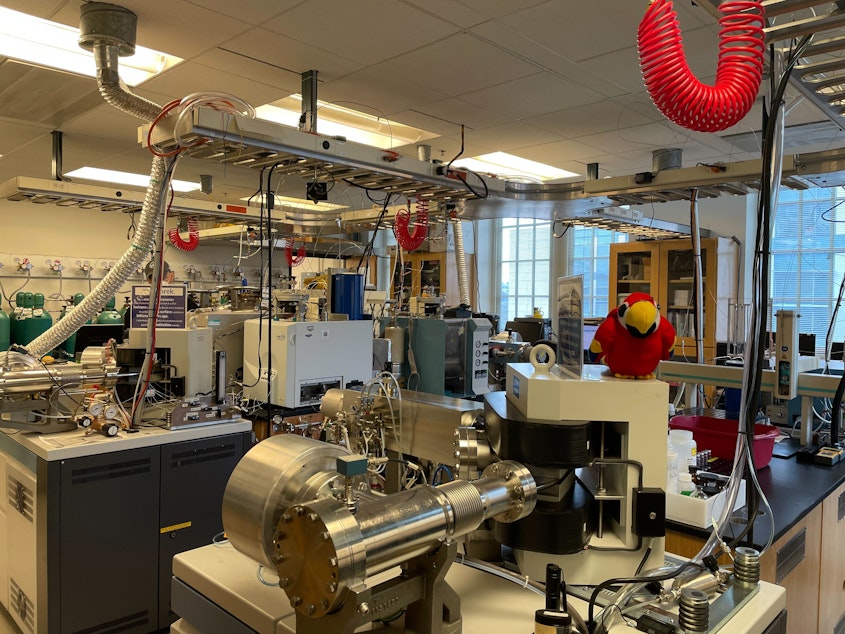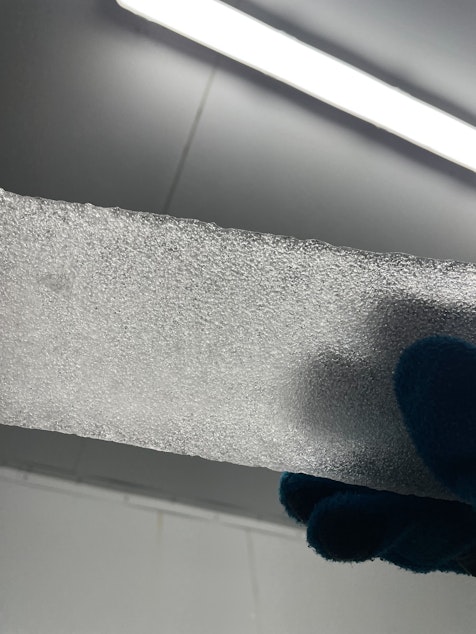What is Antarctic ice telling us? This UW scientist can translate

Sea ice around Antarctica is reaching record lows in 2022. The ice is melting from the bottom and high winds are pushing sheets of ice further apart. And, the ice on glaciers and shelves are melting too. The more that ice melts, the more sea levels rise. That means more floods, storm surges, and erosion.
A huge part of responding to climate change is looking at issues we’re facing now and figuring out how they’ll affect our future. But, studying the past also helps us understand how the climate changed before human intervention.
The Antarctic ice can show us that past.
"If you don't know what would happen without humans, it's hard to evaluate what humans are doing," Eric Steig, the chair of the Departments of Earth and Space Sciences at the University of Washington.
Steig studies ice from ice sheets and glaciers around the world. He and colleagues have collected samples of ice by drilling in Antarctica, Greenland and British Columbia.
They bring cylindrical samples known as ice cores and analyze them in the ISO-Lab on campus, affectionately called the Ice Core Lab.
Sponsored

What can ice cores teach us about climate change today?
Scientists approximate that 125,000 years ago the north polar ice cap melted completely. The sea levels were 6 to 8 meters higher than it is today.
"We want to know why that happened and to understand that we need to understand what the climate was doing at the time," Steig says.
Just last month, NOAA, the National Oceanic and Atmospheric Administration , reported that over the next 30 years we could see the ocean rise 4 to 6 inches.
Sponsored
For context, that’s how much the sea level rose over the last century.
How the climate system works today is fundamental to a lot of ice core research in ISO-Lab. Steig says looking into the deep past to learn about the immediate future is one way ice cores are relevant for people of today. It helps provide analogs for the future.
Through the ice, Steig can help hypothesize and anticipate rates of change today.
One question he askes: how much warmer would it have to be in the near future for the ice sheets to melt as much as they must have done 125,000 years ago?

Sponsored
Ice cores lend themselves to a range of research. They help to understand how lead concentration has changed since the Clean Air Act of 1978 or the amount of forest fire residue lingers after wildfire. One of Steig's students, Gemma O'Connor, implemented climate models and ice core research to understand how the winds in Antarctica have changed.
"And that's important because how the winds have changed is influencing how the ocean is changing, which influences the melting of the ice sheet, which influences sea level, which influences us," Steig adds. "Because sea level is rising, in part because of the melting of the ice sheets."

Ice core research should lead with curiosity
Steig is filled with memories of trips to Antarctica and Greenland. Beautiful places, he set out to learn more about. But, he says people have expectations. We all want to know more about climate today.
Sponsored
"We know what's going on with the climate. We don't actually need to do any more research to have a basic idea of what to do, which is to reduce CO2 emissions."
One of the challenges of his job is finding ways to communicate why a piece of ice from two-million years ago is relevant. To them, he says, it's complicated.
"There's a lot of steps to go from the somewhat esoteric work we do to the daily life of most of us," he says. However, that open-minded and open-ended approach to tackling questions is part of his ethos of learning and discovery.
Ice core research is not a diversion from climate science. But Steig offers that there needs to be a balance in all scientific research.
"Fundamental research for its own sake, needs to be defended," he says. "Discoveries that we make now, we may not know what their application is, but they will or may have applications in the future."
Sponsored
There are hundreds of examples from the history of science, he adds. For example, research for vaccines and coronavirus.
Steig doesn't claim to be a coronavirus expert, but he does point out that major discoveries and understanding of coronaviruses that led to the development of vaccines had been going on for decades. That, he says, is because people were given space to be curious about it.
Today, reports underline that we may see the impact as soon as 30 years. This report, for many, confirmed a common view throughout the scientific community, that the Antarctic ice sheet is imminently going to increase its rate of mass loss and pose a greater threat.
"I didn't get into the research because I wanted to prove that," he says. "I got into it because I was curious, like, 'I wonder what's going on down there.' It's it's a beautiful place that I like studying.
Steig says much of this was not supported a decade ago and that curiosity-driven data and research on the melting ice, particularly the Thwaites glacier helped convince him that we will see it's impact in our lifetime.
"I'm more and more convinced that actually, we have a serious problem with Antarctica, and that we're going to see increasing sea level rise from it — on the timescale of our lifetimes, it's going to be measurable. And that's just an important thing for society to know, so that we can decide to respond or not, perhaps."
Update notice: This story was revised on Wednesday, March 16 to clarify that melting land ice raises sea level. A previous version of this story incorrectly attributed rising sea level to sea ice.




